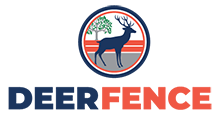Wildlife Fencing: Best Height
Posted on December 03 2018
It's no wonder why buyers are confused which fence type and height is best for deer management, coyote control and ridding bunnies from gardens. To help, we are breaking down the best fence type and height based on the top wild animals found on lawns.
Deer
Over 90% of landscape damage is caused by white-tailed deer. To rid deer from landscapes, growers need to install a deer fence that is at least 7.5-8' feet tall. A plastic deer fence is better suited for light to moderate deer pressure where a metal deer fence works for higher amounts of deer pressure.
Elk
Elk are beautiful majestic members of the cervid family; and while they are huge animals, they are not typically jumpers or chewers. It's best to use a plastic deer fence designed for elk that is at least 6' feet high.
Coyotes
Coyotes are becoming a major problem, even more so than whitetails. Coyotes not only attack livestock, including chickens, but they will not say 'no' to feasting on small dogs and cats. To rid coyotes from yards, it's best to install a chew-proof metal fence that is at least 6' feet high.
Rabbits/Groundhogs
Rabbits and groundhogs are the second major complaint among gardeners. While they may look cute, we know better. They are destructive and will damage vegetable gardens by tunneling underneath flowerbeds and growing areas. To prevent burrowing, it's best to install a metal fence that can be trenched into the ground at least 6-12" inches. Height can be about 2-3" feet. The main concern is the tunneling from both animals.
Bears
Most plastic and traditional metal fences are not strong enough to stop bear movement in gardens. There are two options to deter bears from walking onto growing areas. The first is to install a heavy duty metal livestock fence often made from woven wire. The second is to install an electric fence.
Click here for more information on nuisance wildlife.
